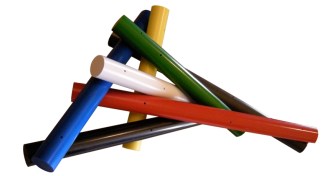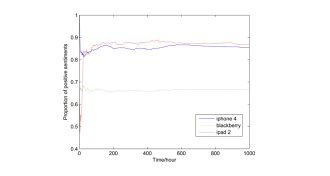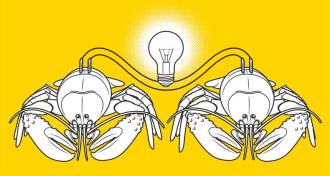Tech
Sign up for our newsletter
We summarize the week's scientific breakthroughs every Thursday.
-
 Computing
ComputingA tale of touching tubes
Mathematicians solve the challenge of putting seven cylinders in contact without using their ends.
-
 Tech
TechMindless: Why Smarter Machines are Making Dumber Humans
Simon Head argues that computer business systems leave middle managers and workers with little creative latitude. They acquire fewer skills and their wages stagnate, hurting their job quality and buying power.
By Nathan Seppa -
 Tech
TechEnglish Channel tunnel
First proposed in 1802 as a tunnel for horse-drawn carriages, the Channel Tunnel, or Chunnel, was built starting in 1987 and opened in 1994.
-
 Tech
TechEarly advantages pay off in public opinion on Twitter
Twitter data show that having a slight advantage early in the formation of public opinion can be beneficial even though the state of the opinions level off over time.
-
 Tech
TechShining a light on radio waves
A new device detects faint signals by first converting them to laser pulses.
-
 Health & Medicine
Health & MedicineRabbit heart gets full electrode jacket
A silicon jacket makes it possible for scientists to place sensors on specific areas of the heart without glue or stitches and could one day be used for diagnosing and treating human heart diseases.
-
 Tech
TechCreature power
Biological fuel cells that generate electricity by harnessing sugars and oxygen in the body may one day power implanted devices in humans and other animals.
By Sam Lemonick -
 Psychology
PsychologyLend an ear to science
Pop music hit maker Clive Davis knows a catchy song when he hears one. Now an app aims to define that elusive quality more concretely.
-
 Neuroscience
NeuroscienceVideo games could boost reading skills in dyslexia
People with dyslexia, a developmental reading disorder, have a harder time switching from visual cues to auditory ones, but the constant shifts in video games may help improve the how quickly individuals perceive the change.
-
 Tech
TechTermite-inspired robots build structures without central command
Simple guidelines keep machines hauling and placing bricks.
By Meghan Rosen -
 Physics
PhysicsGetting warmer in attempt to reach ignition
Fusion energy output hits modest milestone at National Ignition Facility.
By Andrew Grant -
 Chemistry
ChemistrySwapping electrolytes could prevent big battery fires
Researchers now say they have designed a nonflammable lithium ion battery that is as effective as what is already in use.